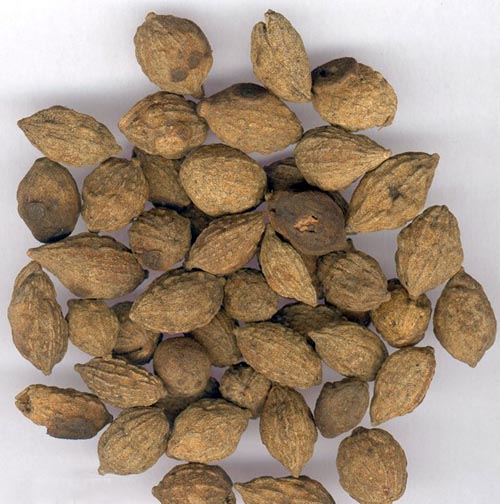The source is from ripe fruit of Alpinia oxyphylla wliq, family Zingiberaceae. The medicinal material is mostly produced in Hainan, Guangdong, and Guangxi, etc., and harvested in autumn when the fruit turns reddish from green, and then dried and taken out of the seeds. It is used crudely or stir-baked with a salty solution, and ground for use.
Medicinal Properties: Pungent in flavor, warm in nature, and attributive to the kidney and spleen meridians.
Actions: Warm the kidney to preserve the essence and decrease micturition, warm the spleen to stop diarrhea and check saliva.

Application
1. It is used for deficiency of kidney-yang manifested as nocturnal emission, spermatorrhea, enuresis or frequent micturition because of its actions of nourishing the kidney and invigorating yang, astringing and solidifying the essence, and stopping frequent micturition. For nocturnal emission, it is used with Buguzhi (Fructus Psoraleae), Longgu ( Os Draconis), and Jinyingzi (Fructus Rosae Laevigatae), etc. ; for enuresis or nocturia, it is made in pills in combination with Shanyao (Rhizoma Dioscoreae), Wuyao ( Radix Linderae), such as Suoquan Wan (Pill).
2. It is applied for diarrhea, cold pain in abdomen or salivation due to spleen-stomach cold deficiency. For diarrhea due to weakness and cold in the spleen and stomach, it is usually used together with Baizhu (Rhizoma Atractylodis Macrocephalae ), Ganjiang ( Rhizoma Zingiberis), etc. ; for salivation, used together with Dangshen (Radix Codonopsis ), Baizhu ( Rhizoma Atractylodis Macrocephalae ), and Jupi (Pericarpium Citri Tangerinae ) , etc.
Usage and Dosage: 3 -10 g is used in decoction.Buguzhi Fructus Psoraleae.








